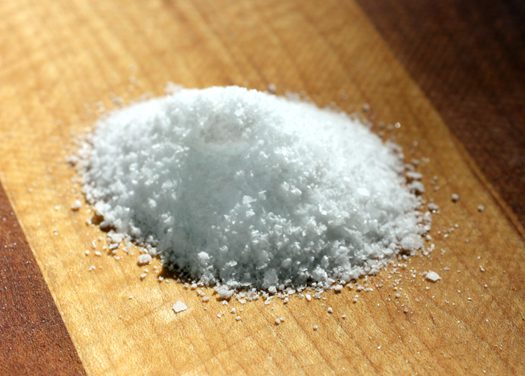Salt of the earth (and sea)
August 14, 2021 by DarcieAlthough sodium chloride is one of the most basic tools in a cook’s arsenal, the different types of salt available can be confusing. Food writers and chefs generally write recipes with a particular brand and formulation in mind, and results can vary if you stray from it. In the US, the go-to for most food writers is Diamond Crystal (DC) kosher salt. The salt has larger crystals than average, which means that a teaspoon of DC salt weighs less than a tablespoon of other kosher salts like Morton’s, and far less than regular, fine table salt.

Since it can be difficult to weigh small amounts of salt – most cooking scales aren’t accurate enough for these fine measures – Epicurious has assembled a useful salt conversion chart, a grid that identifies weights and measures for six commonly available salts. You can also extrapolate this to use as a general guide for the differences between fine and coarse salts.
The Epicurious article also breaks down the most basic salt facts, identifying the two main types – evaporative (sea) salts and rock (earth) salts along with a little background on the common uses for each. It also dives into some of the more unusual salt varieties, noting differences between black salt, pink salt, fleur de sel, sel gris, flake salt, and more. In addition to explaining various applications for each of the salts, authors Janet Fuller and Joe Sevier also explore how the salt you choose can affect your cooking.
Categories
- All Posts (6940)
- Antipasto (2135)
- Author Articles (247)
- Book News (935)
- Cookbook Giveaways (983)
- Cookbook Lovers (257)
- Cooking Tips (109)
- Culinary News (299)
- Food Biz People (552)
- Food Online (791)
- Holidays & Celebrations (272)
- New Cookbooks (149)
- Recipes (1500)
- Shelf Life With Susie (231)
- What's New on EYB (133)
Archives
Latest Comments
- Atroyer7 on Danube Cookbook Review and Giveaway
- demomcook on What foods do you look forward to the most for each season?
- demomcook on Danube Cookbook Review and Giveaway
- Darcie on How cookbooks can help build resilience
- mholson3 on Danube Cookbook Review and Giveaway
- Rinshin on How cookbooks can help build resilience
- sarahawker on Danube Cookbook Review and Giveaway
- Sand9 on Danube Cookbook Review and Giveaway
- hankintoby29 on Heritage Cookies of the Mediterranean World – Cookbook Giveaway
- WBB613 on Feasts of Good Fortune Cookbook Giveaway